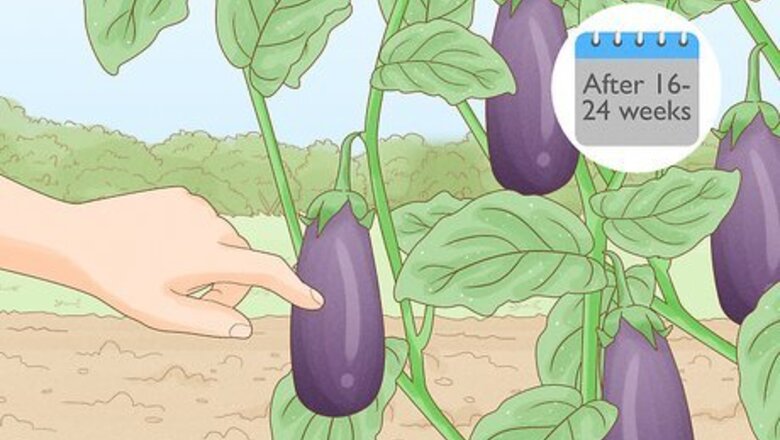
views
Checking for Ripeness
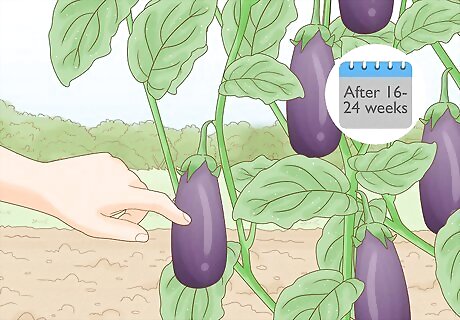
Start checking the eggplants around 16 weeks after planting. It can take eggplants 16-24 weeks to grow before they can be harvested. Eggplants can become overripe and bitter quickly, so make sure to check every 1-2 days to see if they are ready. Once an eggplant shows signs of being ripe, it is time to harvest. If you wait a few days, it can start to turn bitter.
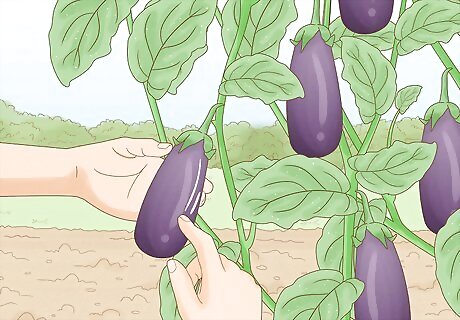
Inspect the eggplant for smooth and shiny skin. When it is ready to be harvested, the eggplant’s skin should appear glossy and smooth. There should be no wrinkles on the surface of the plant. There are many different colorations of eggplant. Check to see what color yours should be when ripe. It might be deep purple, white and purple striped, or completely white.
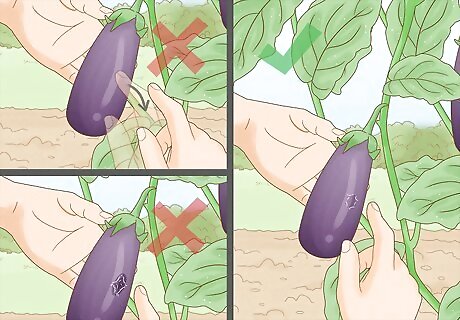
Press your finger into the eggplant to test its tenderness. A good eggplant will not spring back immediately. It may leave a slight mark after pressing it gently. If the skin springs back, it is not yet ripe. If it leaves a deep indentation, however, it may be overripe.
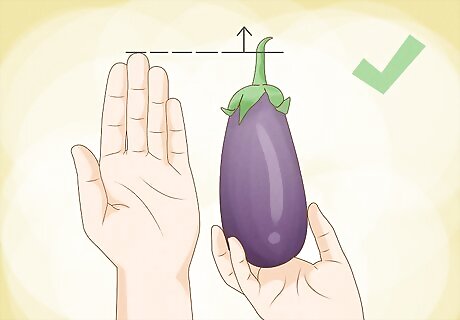
Measure the size of the eggplant against your hand. Because eggplants can get overripe quickly, it is best to pick them while they are still on the small side. Once the eggplant becomes glossy and tender, hold it up with 1 hand. Pick it when it is just slightly larger than your hand.
Picking Eggplant
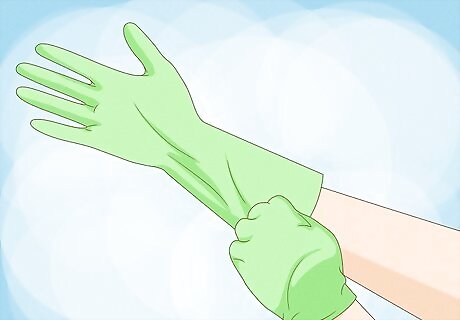
Put on a pair of gardening gloves. Gloves will protect your hands from the prickly cap on top of the eggplant. It can also prevent knicks or cuts from the sharp knife or shears that you will use to cut the eggplant.
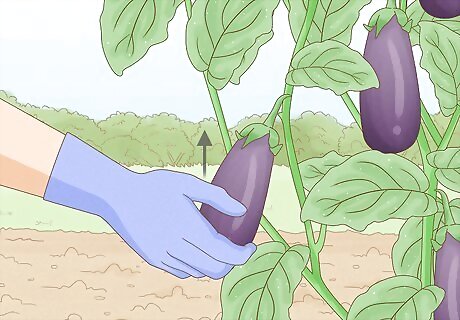
Raise the eggplant up with 1 hand. Hold the eggplant with your non-dominant hand. Move it so that you can easily reach the stem growing out of the cap. Raising it up slightly helps you get to the stem.
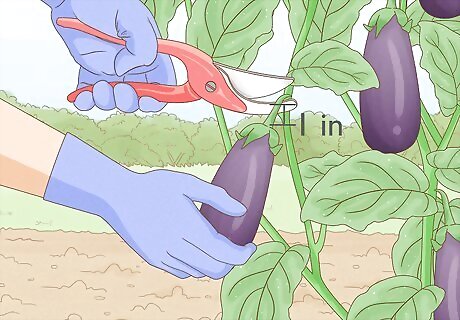
Cut the eggplant off close to the stem. Use a sharp knife or pruning shears. Leave about 1 inch (2.5 cm) of the stem on the eggplant. The stems can be very thick and tough, so you should make sure that your knife or shears are very sharp. Do not try twisting or pulling the eggplant off by hand. You may end up damaging the vegetable.
Storing Harvested Eggplant
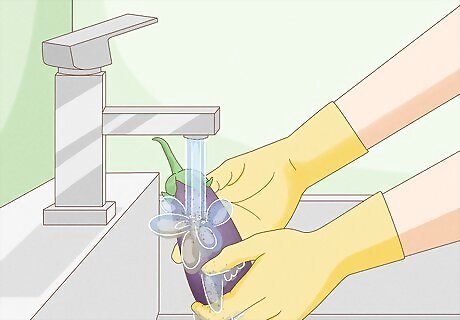
Rinse off dirt with water. Run the eggplant under a gentle stream of water. With your finger, gently remove any visible dirt. Pat the eggplant dry with paper towels afterwards until it is completely dry.
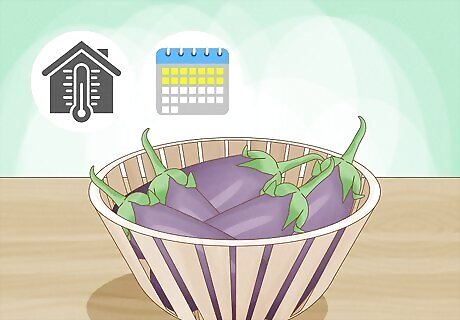
Store eggplants at room temperature for 1-2 weeks. You can comfortably keep the eggplant on the counter in your kitchen, as long as the temperature does not go below 50 °F (10 °C). Just place the eggplants in a bowl on your counter or table.
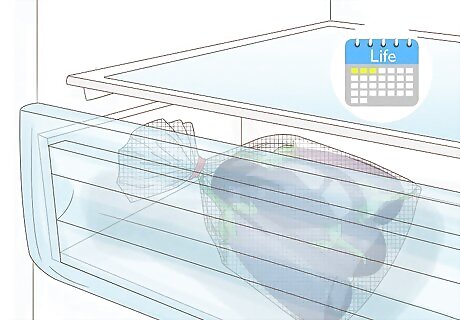
Place eggplants in a refrigerator for up to 3 days. Place the eggplants inside of a vegetable bag or a plastic bag with holes. Store the eggplant with other vegetables in a vegetable drawer, but keep it away from fruit like apples and tomatoes. These release gases that can cause the eggplant to over-ripen. If your vegetable drawers in your refrigerator have a humidity switch, turn it to “high” or “vegetables.” Store your eggplants in the drawer with other humidity-loving vegetables like spinach and peppers. If the fridge's temperature dips below 41 °F (5 °C), your eggplant will begin to form brown pits on the surface. You must throw away the eggplant if this happens.
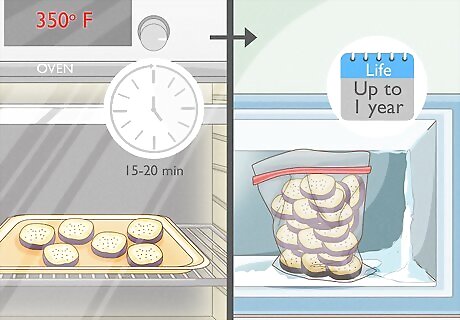
Cook the eggplant first if you want to freeze it. Eggplant does not freeze well while raw. If you want to save your eggplant for later, either roast it or puree it before putting it into the freezer. It will last for up to 1 year using this method. To roast the eggplant, slice it into 1 inch (2.5 cm) rounds. Turn the oven to 350 °F (177 °C), and cook it for 15-20 minutes. Wrap the rounds in freezer paper and store them in freezer bags before putting them in the freezer. To puree the eggplant, poke the whole eggplant several times with a fork. Roast it in the oven at 400 °F (204 °C) for 30-45 minutes. Once it is tender, remove the eggplant and slice it open. Scoop out the flesh and put it into freezer bags. Place the bags into the freezer.
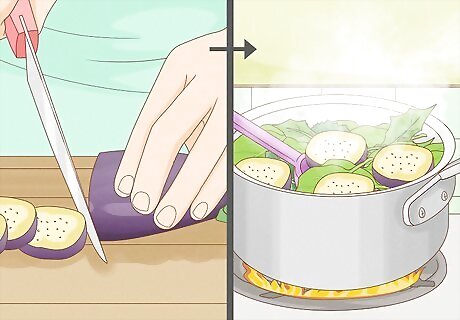
Slice or cut an eggplant only when you are ready to use it. Once the eggplant is peeled, cut, or sliced, it will quickly expire. Only cut up your eggplant when you are ready to put it into a dish. If you cut it open and see many brown seeds inside, it means that the eggplant was overripe when it was picked. While you can eat it, the eggplant will taste very bitter.
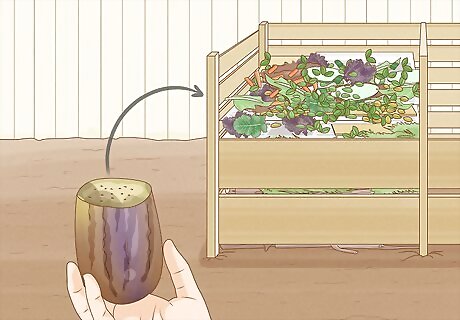
Throw away eggplant when it starts to turn soft or brown. Soft, pitted, or wrinkled skin is a sign that the eggplant has gone bad. The skin may turn brown or form pits. When this happens, get rid of the eggplant. Eggplants usually do not last longer than 2 weeks after harvest. You can put eggplants into a compost pile. Just make sure to cut them open to speed up the process.



















Comments
0 comment